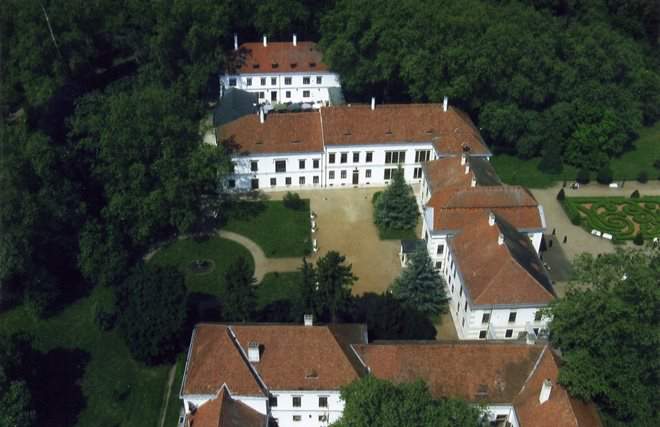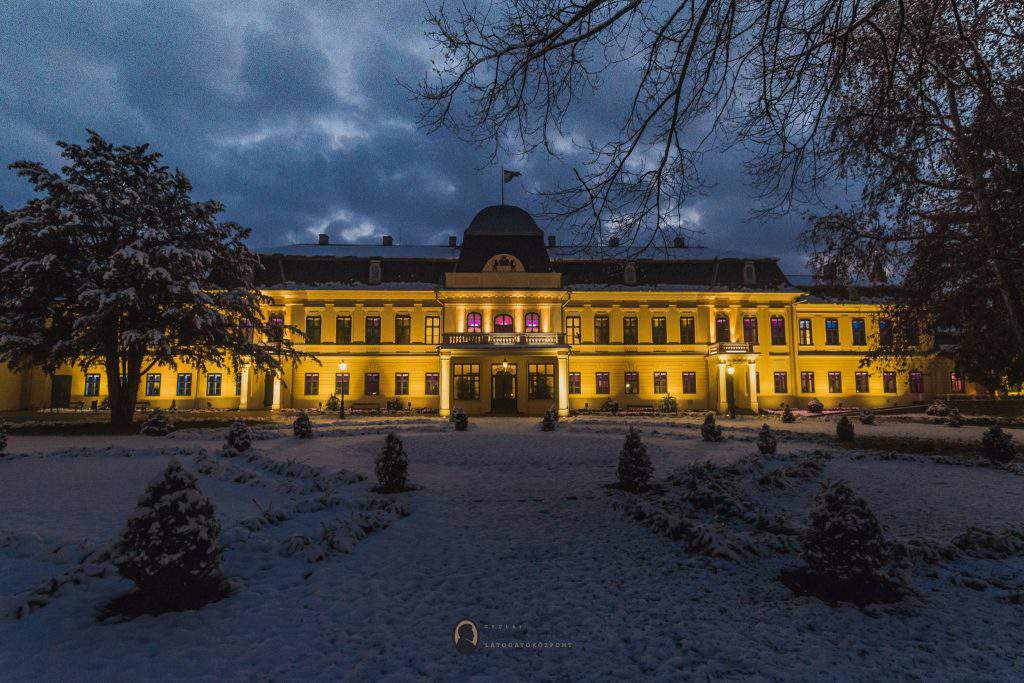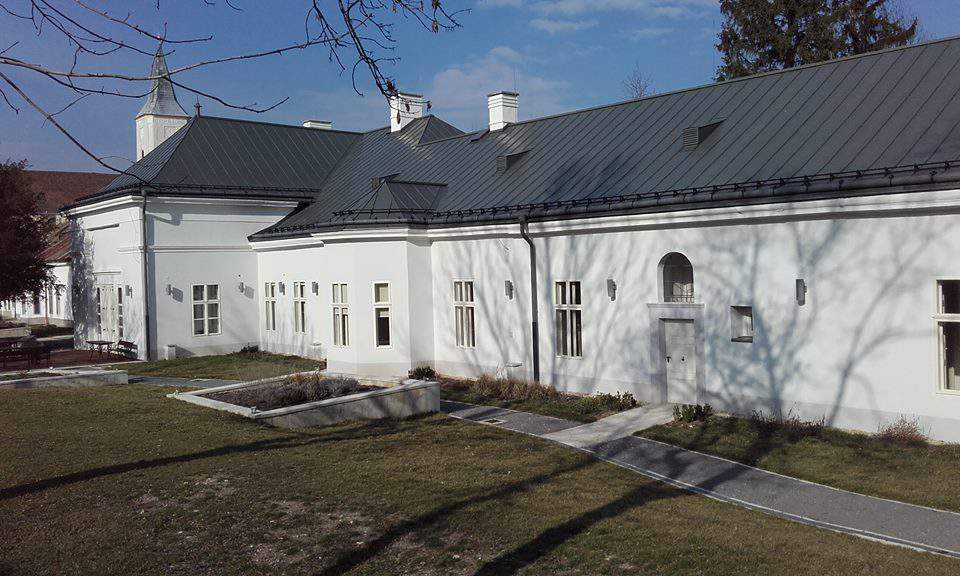Must-see castles of Hungary

Travelo.hu listed the most beautiful castles in the country; the trick lies in deciding which one you want to see first. Do you want to take a carriage ride along the black pines in Keszthely, maybe have a picnic and treat yourself to a wine tasting? Or do you want to get a glimpse of the life of count Almásy and his servants in Gyula? Or maybe you would rather start by experiencing the extravagance of 19th century aristocratic balls in Tolcsva? History lessons have never been this fun!
Széchenyi castle in Nagycenk
This castle is on our list mainly because its park was once the most popular venue for taking wedding pictures. Also, the rows of linden-trees in front of the entrance are so unique that they made it onto the UNESCO world heritage list. One and a half years ago a permanent exhibition was opened. This lets the visitors walk through the castle, room by room, and experience a day in the Count’s life. The exhibition has a separate section showing Széchenyi’s role in the social organisations of that era and all his initiatives connected to water. Another room is decorated to show his travels, the inventions and customs of people he met abroad.

After almost 60 years the chapel has regained its original purpose. The chapel was the first thing built in this castle, and the Széchenyi family used it for 200 years. But in case you have already seen the castle, do not miss the mausoleum that was renovated during the summer of 2015. You can find it in the municipal cemetery of Nagycenk, where the burial vaults contain not only the remains of István Széchenyi, but also the remains of his 46 descendants.
If you are looking for a thematic playground, look no further than the Saint Stephen Church.
Here you can find Széchenyi balancing on top of the see-saw, a wooden version of the Chain Bridge and a labyrinth symbolizing the Széchenyi family-tree.
If you are planning to visit during the spring or summer, you can even try the Széchenyi Museum Railway. The train is available for travel between the 1st of May and the 30th of September on the route Fertőboz—Barátság—Castle (Nagycenk). The little steam locomotive could be the perfect thing that helps us travel back in time and experience the castle and the museum thoroughly, through the eyes of a 19th-century aristocrat.
Business hours: during the spring and summer, Tuesday-Sunday 10am-6pm.
Entrance fee: adults 1400 Ft, students (26 years old and under) and seniors 700 Ft.
Festetics Castle in Keszthely
The Festetics castle is both a museum and an event centre. Kristóf Festetics started building it in 1745, and 140 years later, after the demolition of the north wing, Tasziló Festetics II. made plans to have a new wing built. Which is why the castle is now twice the size of the original construction. It also has central heating and running water.

Interestingly, Tasziló is like the protagonist of a love story. Mary-Victoria Douglas-Hamilton, the princess of Monaco, decided not to go through with her arranged marriage, she moved to Keszthely instead.
The castle was renovated two years ago, and the former living spaces were transformed into the Festetics Portrait Gallery. It is worth walking through every single room, because there are not many places that have this level of splendour: chandeliers hanging from the ceiling, antique furniture and a home library with 80 thousand Helikon books. Of course, the life of the nobility does not stop at the magnificent castle: visitors can look through exhibitions featuring chariots and hunting.
After your tour, head down to the 500-year-old wine cellar and try the wine tasting offered by the House of Balaton Wines (Balatoni Borok Háza).
The Festetics Castle is the first Hungarian castle that offers some unique services.
You can buy whole picnic baskets, filled with local foods, and head out to the grassy areas around the castle and have a nice meal, experiencing some new tastes, all the while having a magnificent castle in the background.
It is another option to rent some modern sports equipment or toys that were popular in that era. The castle is still forming and changing; the park will become four times its original size after all the renovations are done. The park will be remade to mirror the construction plans made in the 1880s in England. Soon, we will have a 7 kilometres long trail in the woods that is perfect for a carriage ride.
Business hours: May to June 10am-5pm, July to August 9am-6pm.
Entrance fee: tickets for the whole exhibition are 3700 Ft for adults, 1850 Ft for students (ages 6-26), but the tickets can be purchased for individual sections too. Click here to read about ticket prices.
Read about the city of Keszthely by clicking here, and find other interesting places to visit while you are in the area.
Almásy Castle in Gyula
This is the castle where you are greeted by a butler and where you can see a room with 500 keys hanging on the walls.
The castle was renovated, and it opened two years ago in Gyula. The building now houses a café, a museum and a gift store. 21-century high-tech audio tours guide visitors, and upon entering the castle, they are met by the 3D image of the butler, the housekeeper, the cook and the curtsying chambermaid. After watching a short film about life in the castle, visitors are welcome to start roaming the building.

The castle was built in the 18th century, and every room is there to give us a glimpse into the world of the servants and their hierarchy. We can see how laundry and ironing were done hundreds of years ago and there is a mock-up showing us the housekeeper’s room. The housekeeper was at the top of the servant hierarchy; she was the one who had keys to everything in the castle. The exhibition also has an old cookbook we can look through, and we can smell the perfume of the era, called the National fragrance. You can look through the photos taken in the castle’s many rooms here.
Entrance fee: 2200 Ft for adults, 1100 for students (under 26) and seniors. A ticket for the lookout tower is either 400 Ft or 200 Ft (for students and seniors).
Business hours: Tuesday to Sunday, 10am-6pm. Guided tours from 10:30, 11:30 and 14:30.
Szirmay-Waldbott castle in Tolcsva
The visitor centre was opened two years ago after the renovations were finished in the saloon, the library and the chapel. The park also got a new look. There is an exhibition about local history, showing the story of the building and the lifestyle of its occupants. The Szirmay family already had a big land in Tokaj-Hegyalja during the 17th century and a house in Tolcsva in the 1700s. Stories say that the castle still retains some elements of the original house.

Ödön Szirmay sold the castle to the Waldbott family in 1850. The current construction dates back to the time of Baron Frigyes Waldbott. Visitors have the option of using a mobile app called “By guide” to learn about the two noble families and the history of the castle. There are also touchscreen monitors in every room that offer information. Aside from the thematic rooms, the ceremonial hall, the library with 18 family crests and the saloon with its original wainscoting are all furnished based on old photos so that visitors can immerse themselves in the atmosphere on the 1900s.
Business hours: spring and summer, Tuesday to Saturday 9am-5pm.
Entrance fee: 1200 Ft for adults, 600 Ft for students and seniors, family tickets for 2500 Ft.
If you are interested in a more extensive list of Hungarian castles, check out our previous article:
[button link=”#https://dailynewshungary.com/20-must-see-castles-in-hungary/” type=”big” color=”lightblue” newwindow=”yes”] 20 must see castles in Hungary[/button]
Featured image: Széchenyi castle. Source: facebook.com/nagycenk.szechenyikastely/
Source: travelo.hu





